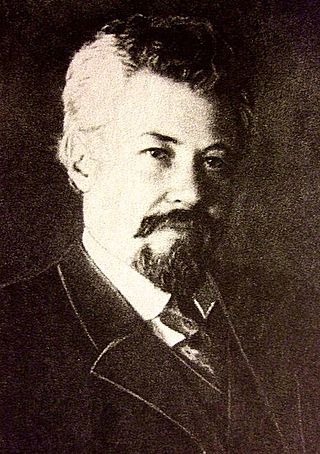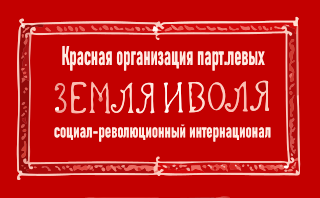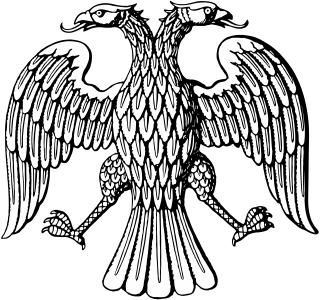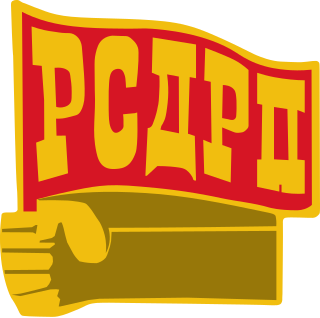
The October Revolution, also known as the Great October Socialist Revolution, or October Coup, was a revolution in Russia led by the Bolshevik Party of Vladimir Lenin that was a key moment in the larger Russian Revolution of 1917–1923. It was the second revolutionary change of government in Russia in 1917. It took place through an armed insurrection in Petrograd on 7 November 1917 [O.S. 25 October]. It was the precipitating event of the Russian Civil War.
The history of the Communist Party of the Soviet Union was generally perceived as covering that of the Bolshevik faction of the Russian Social Democratic Labour Party from which it evolved. In 1912, the party formally split, and the predecessor to the Communist Party of the Soviet Union became a distinct entity. Its history since then can roughly be divided into the following periods:

Elections to the Russian Constituent Assembly were held on 25 November 1917, although some districts had polling on alternate days, around two months after they were originally meant to occur, having been organized as a result of events in the February Revolution. They are generally recognised to be the first and last free elections in Russian history.

The All-Russian Central Executive Committee was the supreme governing body of the Russian Soviet Federative Socialist Republic in between sessions of the All-Russian Congress of Soviets from 1917 to 1937. In 1937, the All-Russian Central Executive Committee was replaced with the Presidium of the Supreme Soviet of the Russian SFSR.

The Left SR uprising, or Left SR revolt, was a rebellion against the Bolsheviks by the Left Socialist Revolutionary Party in Moscow, Soviet Russia, on 6–7 July 1918. It was one of a number of left-wing uprisings against the Bolsheviks that took place during the Russian Civil War.

The All-Russian Congress of Soviets evolved from 1917 to become the supreme governing body of the Russian Soviet Federative Socialist Republic from 1918 until 1936, effectively. The 1918 Constitution of the Russian SFSR mandated that Congress shall convene at least twice a year, with the duties of defining the principles of the Soviet Constitution and ratifying peace treaties. The October Revolution ousted the provisional government of 1917, making the Congress of Soviets the sole, and supreme governing body. This Congress was not the same as the Congress of Soviets of the Soviet Union which governed the whole Soviet Union after its creation in 1922.

The Party of Left Socialist-Revolutionaries-Internationalists was a revolutionary socialist political party formed during the Russian Revolution.

The Petrograd Military Revolutionary Committee was a militant group of the Petrograd Soviet and one of several military revolutionary committees that were created in the Russian Republic. Initially the committee was created on 25 October 1917 after the German army secured the city of Riga and the West Estonian Archipelago. The committee's resolution was adopted by the Petrograd Soviet on October 29, 1917.

The All Russian Constituent Assembly was a constituent assembly convened in Russia after the February Revolution of 1917. It met for 13 hours, from 4 p.m. to 5 a.m., 18–19 January [O.S. 5–6 January] 1918, whereupon it was illegally dissolved by the Bolshevik-led All-Russian Central Executive Committee, proclaiming the Third All-Russian Congress of Soviets the new governing body of Russia.

The Socialist Revolutionary Party, also known as Party of Socialist-Revolutionaries or Social Revolutionary Party, was a major political party in late Imperial Russia, during both phases of the Russian Revolution, and in early Soviet Russia.

The Russian Social Democratic Labour Party, also known as the Russian Social Democratic Workers' Party or the Russian Social Democratic Party, was a socialist political party founded in 1898 in Minsk.
The Petrograd Soviet of Workers' and Soldiers' Deputies was a city council of Petrograd, the capital of Russia at the time. For brevity, it is usually called the Petrograd Soviet.

The Second All-Russian Congress of Soviets of Workers' and Soldiers' Deputies was held on November 7–9, 1917, in Smolny, Petrograd. It was convened under the pressure of the Bolsheviks on the All-Russian Central Executive Committee of the First Congress of Soviets of Workers' and Soldiers' Deputies.
The All-Russian Central Executive Committee of the Soviets of Workers' and Soldiers' Deputies was a permanent body formed by the First All-Russian Congress of Soviets of Workers' and Soldiers' Deputies.

The First All-Russian Congress of Soviets of Workers' and Soldiers' Deputies was held from 16 June to 7 July 1917 in Petrograd in the building of the First Cadet Corps on Vasilyevsky Island. The First All-Russian Congress of Soviets, at which the majority belonged to the Mensheviks and Socialist-Revolutionaries, rejected the resolutions proposed by the Bolsheviks to end the war and transfer all power to the Soviets and adopted Socialist-Revolutionary and Menshevik resolutions proclaiming the full support of the Socialist Ministers and the continuation of the "revolutionary war" on the basis of the rejection of annexations and indemnities.
The Third All-Russia Congress of Soviets of Peasants’ Deputies was held at the Smolny Institute, Petrograd on 26 January 1918 [O.S. 13 January 1918]. The Socialist Revolutionary Party (SRs) wanted to keep the Congress Peasants' Deputies separate from that of the Congress of Workers’ and Soldiers’ Deputies which was being run concurrently at the Tauride Palace, also in Petrograd. However, during the first session, the Bolshevik, Yakov Sverdlov, the Chairman of the All-Russian Central Executive Committee proposed a motion for the Congress to merge with that of the Third All-Russian Congress of Soviets of Workers’ and Soldiers’ Deputies. Despite opposition from the SRs and the Mensheviks, the motion was passed with the support Bolsheviks and the Left Socialist Revolutionaries, thereby transforming the two congresses into the Third All-Russian Congress of Workers', Soldiers' and Peasants Deputies' Soviets.
The Bolshevization of the Soviets was the process of winning a majority in the Soviets by the Russian Social Democratic Labor Party (Bolsheviks) in the second half of 1917. The process was particularly active after the Kornilov Rebellion during September – October 1917 and was accompanied by the ousting from these bodies of power previously moderate socialists, primarily the Socialist Revolutionaries and Mensheviks, who dominated them.

An index of articles related to the Russian Revolution and the Russian Civil War period (1905–1922). It covers articles on topics, events, and persons related to the revolutionary era, from the 1905 Russian Revolution until the end of the Russian Civil War. The See also section includes other lists related to Revolutionary Russia and the Soviet Union, including an index of articles about the Soviet Union (1922–1991) which is the next article in this series, and Bibliography of the Russian Revolution and Civil War.

The Fifth All–Russian Congress of Soviets was held on July 4–10, 1918, in Moscow.
Obliskomzap, short for Regional Executive Committee of the Soviets of Workers, Soldiers and Peasants Deputies of the Western Region and Front, was an organ for Soviet power in the Western Region claiming governing authority in the Belarusian lands not under German or Austro-Hungarian occupation from late 1917 throughout 1918. It was to function as the highest body of legislative power, between the holding of congresses of soviets, in Vitebsk Governorate, Mogilev Governorate, Minsk Governorate, Vilna Governorate and Smolensk Governorate. A Regional Council of People's Commissars was formed as the corresponding executive branch of government.














